From the West Hartford Archives: Northwest Corner of Farmington and Main

Audio By Carbonatix
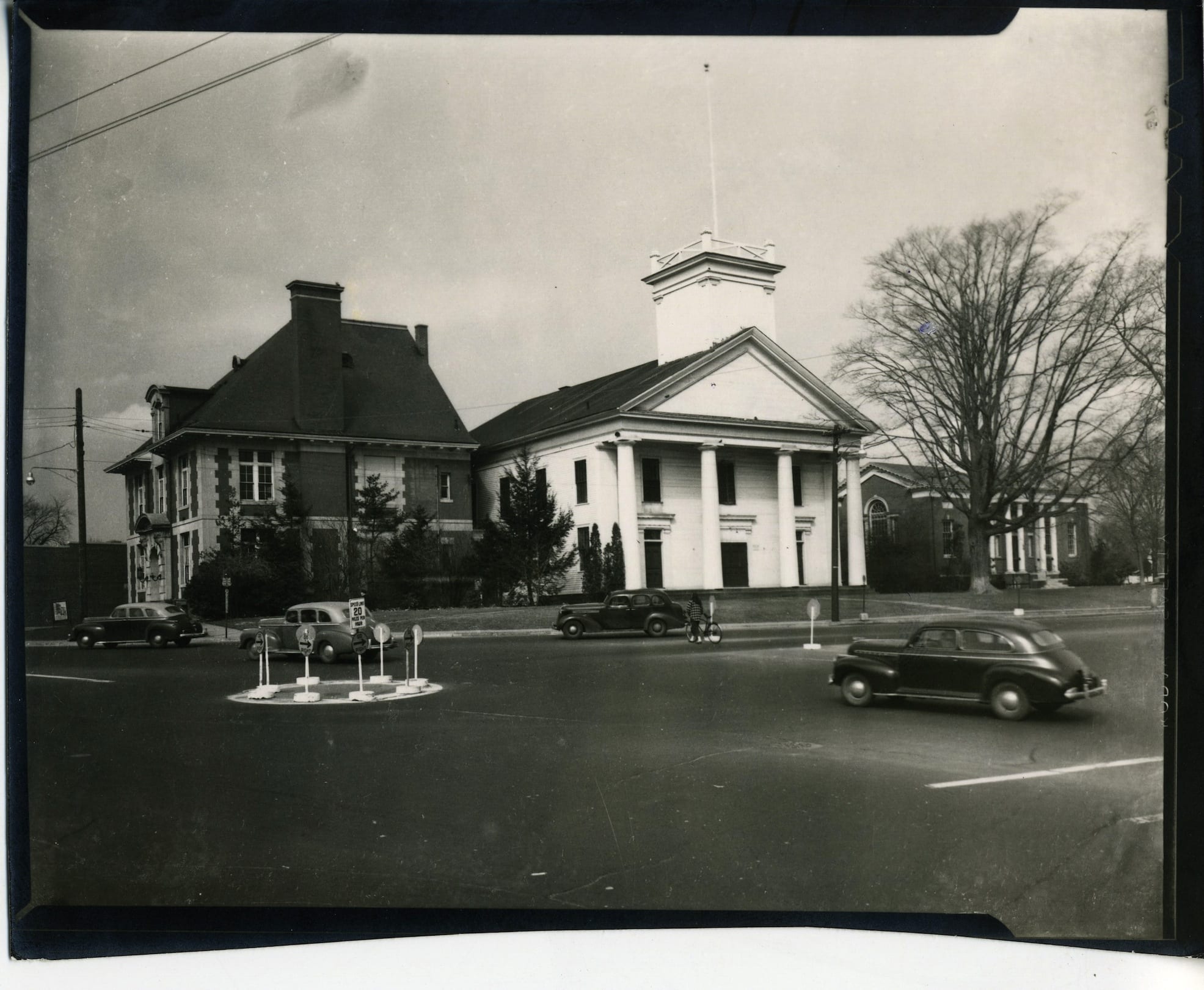
Northwest corner of Farmington and Main in West Hartford Center, taken sometime between 1937-1947. Courtesy of Noah Webster House & West Hartford Historical Society
Historian Jeff Murray takes a look into West Hartford’s past to uncover some surprising information, stir up some memories, or reflect on how much life has changed – or hasn’t changed at all. Enjoy this week’s ‘From West Hartford’s Archives’ …
By Jeff Murray
This photograph was taken sometime between 1937 and 1947. These three buildings in this photo standing at the northwest corner of Farmington Avenue and North Main Street represent three different core aspects of West Hartford’s early community. The first is religion.
The Congregational Church in West Hartford, seen in the middle, has roots dating back to the early 1700s. The first settlers had to travel to Hartford for service, but as the number of families grew, the desire to push for the establishment of a local church overcame the individual tolerance of the time and effort it took to head into the city, sometimes against harsh weather conditions. The petition in 1711 for a separate parish noted the construction of several houses and abundant land for new families that would help justify the move. When Connecticut’s General Court finally signed off, the new Fourth Congregational Church of Hartford was established and Benjamin Colton was made the first pastor in February 1713. The congregation at its birth had just 29 members, but that number steadily grew over the decades.
Connecticut was swept up in the First Great Awakening in the 1730s, a wave of religious enthusiasm in the American colonies driven by prominent religious leaders, like Jonathan Edwards and George Whitefield. They spread messages of a personal and emotional relationship with God, which challenged the traditional practice at the time, which was much more formal and ritualistic. The growing influence of Enlightenment ideas, a sense of complacency with doctrine, prolific preachers, and a sense of division in the colonies in the decades before the American Revolution helped push this awakening forward.
Many congregations, like West Hartford’s, saw an increase in attendance and connection, but the traditional church establishment was shaken. In some cases, the movement split up whole churches as ministers and churchgoers were divided over doctrine and formed new ones. In West Hartford’s case, Rev. Colton, who was more traditional, managed to survive through the movement with the help of outside officials and the adoption of some new ideas as compromise until he was succeeded in 1759. During his tenure, in 1742, the congregation built the second church building in the Center.
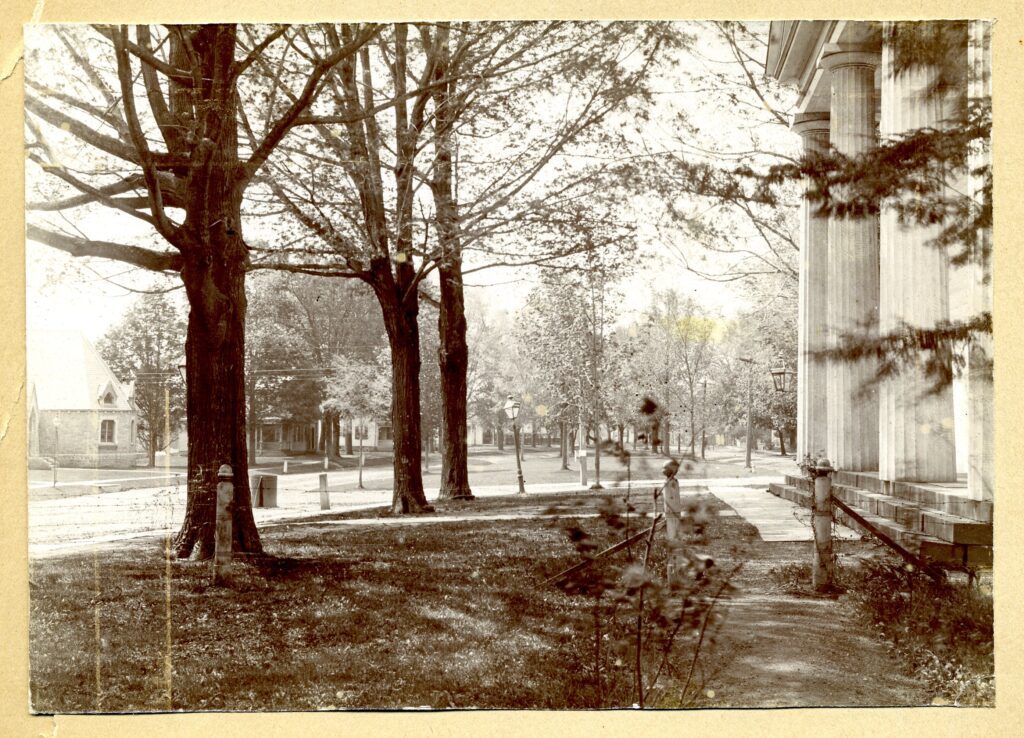
An idyllic view looking south at the entrance to the Congregational Church building, then the Town Hall. Photo courtesy of Noah Webster House & West Hartford Historical Society
The third church, the one seen in this photo, was built in 1834. The town had been through a lot at this point – the American Revolution, migrations to the West, the Second Great Awakening, the evolution of capitalist markets, and the very beginnings of industrialization. The change in the church architecture from a tiny colonial one-room box to this columned design represented such a growth. This design was used so much across the U.S. By borrowing elements from Greek or Roman architecture, it was meant to symbolize order, permanence, and the democratic ideals of the new country.
The church building stood until its demolition in the mid-1950s, but it was replaced by a fourth Greystone church in the 1880s across the street where the current fifth church is located. The old church at the northwest corner was used as the Town Hall for many years.
The second core aspect of West Hartford was the government. The use of the old church as the quarters for the town hall helped cement the emerging bureaucratic nature of the government. The brick building at the left was known as the Town Office Building and was built in 1902. The first floor consisted of a large room for the selectmen as a communal office or for holding small town meetings. There was also a town clerk’s office with a record vault. The basement included the coal and heater room, as well as a jail with two iron cells. The second floor was laid out as a hall that could seat “200 or 300 people.”
Independence from Hartford in 1854, the drive of industrialization that fueled population growth after the Civil War, and immigration through the 1880s and 1890s had made it necessary to compartmentalize the functions of the government and, in the case of this town office building, literally preserve a huge number of records that would have otherwise been lost or mismanaged. The building also bore witness to the changes facilitated by this growth in government – electric lights were installed in 1903; residents duked it out over taxes, roads, and schools in the second-floor hall; political organizations campaigned fiercely; a fire escape was built in 1905; and a telephone booth was built for private business in 1912.
Infrastructure was a key aspect of government involvement in this modern era.
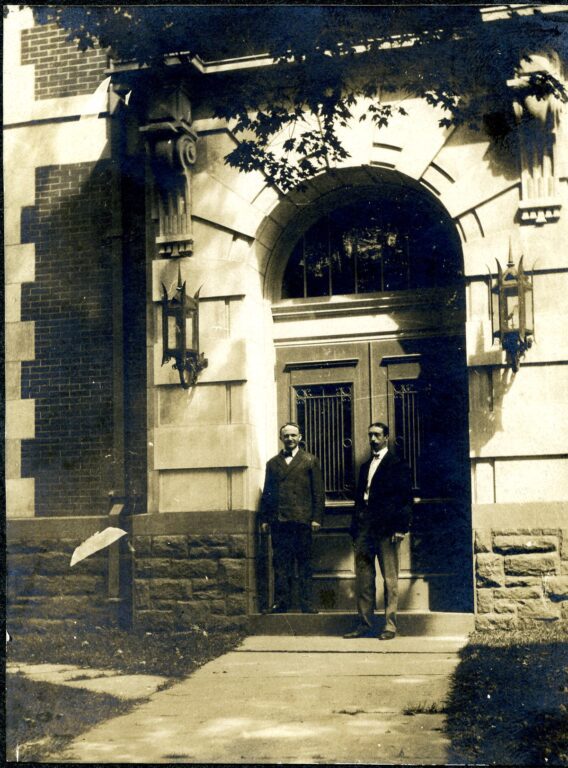
The entrance to the Town Office Building, taken on Aug. 23, 1904. Photo courtesy of Noah Webster House & West Hartford Historical Society
Over time, the town office building became the town hall “annex” until it was torn down in the summer of 1947. The West Hartford Garden Club restored the grounds soon after its demolition. For years before its removal, in addition to its government functions, it was also used by the third pillar in West Hartford: community organizations.
Not long after its dedication in 1902, the upper hall was leased to the Wyllys Lodge from 1903 to 1908. It was also home to meetings for the Civic League, the Business Men’s Association (which eventually became the Chamber of Commerce), the Grange, and various student athletic organizations, like the Lucky Fifteens. Sometimes, the building was insufficient for an organization that needed larger or more permanent quarters. The Daughters of the American Revolution, Sarah Whitman Hooker chapter, formed in 1906 and set out on a fundraising effort to build a separate space for a free public library.
Originally located in the Congregational Church, the public library had grown and was becoming an institution of its own. After several years of fundraising events and squabbling over its location, the D.A.R. settled on the lot north of the church and had the library built at the corner of Brace Road. This can be seen at the far right. It is the only building that still stands at the corner, as the area where the church and town office building stood is now the site of the Veterans Memorial.
These three pillars – religion, government, and community organizations – were core to early West Hartford. There was, however, significant overlap between them. Religious institutions held a certain amount of sway in town government and individual families tended to participate in both. Many community organizations were born out of the church, like student athletic associations, or rented space from the church, like the original public library. Community organizations also lobbied the town government for new rules and regulations; in turn, the government helped sanction, organize, or house nascent groups.
In a way, all three helped each other grow over time and drive each of their paths towards what they are today. This photograph, a great view of a corner of the Center, also symbolizes the core tenets of the town from its beginning and illustrates how they supported each other through the years.
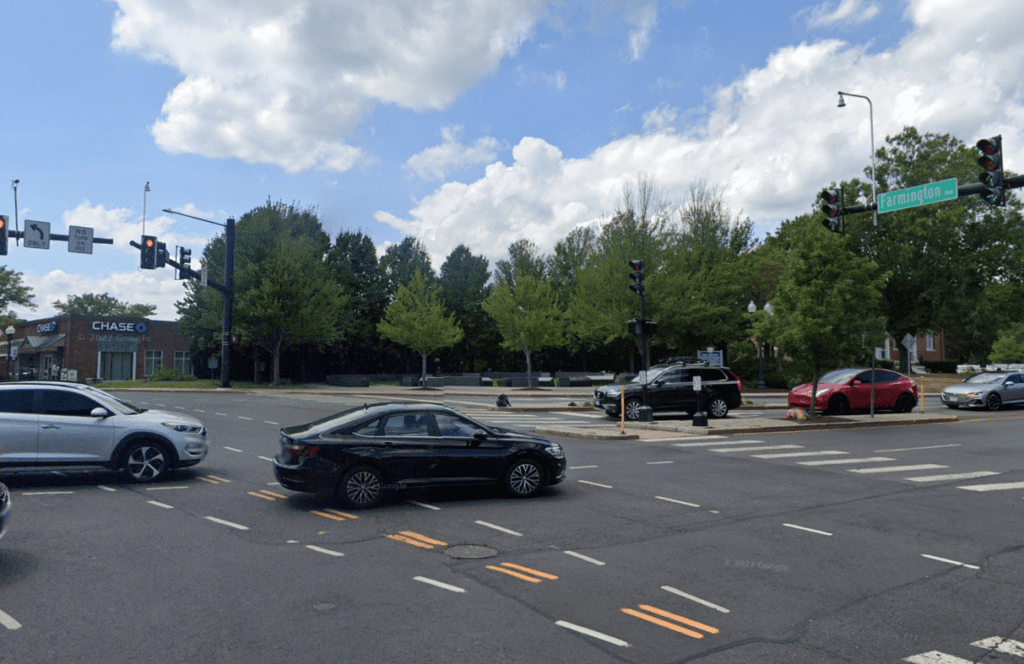
Northwest corner of Farmington and Main in West Hartford Center. Google street view
Jeff Murray was born and raised in West Hartford and has been involved with the Noah Webster House & West Hartford Historical Society since 2011 when he was a high school student and won the Meyer Prize for his essay on local history. Jeff routinely volunteers as local history researcher uncovering information for numerous museum programs such as the West Hartford House Tour and West Hartford Hauntings. Jeff works as a data analyst at Pratt & Whitney.
Like what you see here? Click here to subscribe to We-Ha’s newsletter so you’ll always be in the know about what’s happening in West Hartford! Click the blue button below to become a supporter of We-Ha.com and our efforts to continue producing quality journalism.


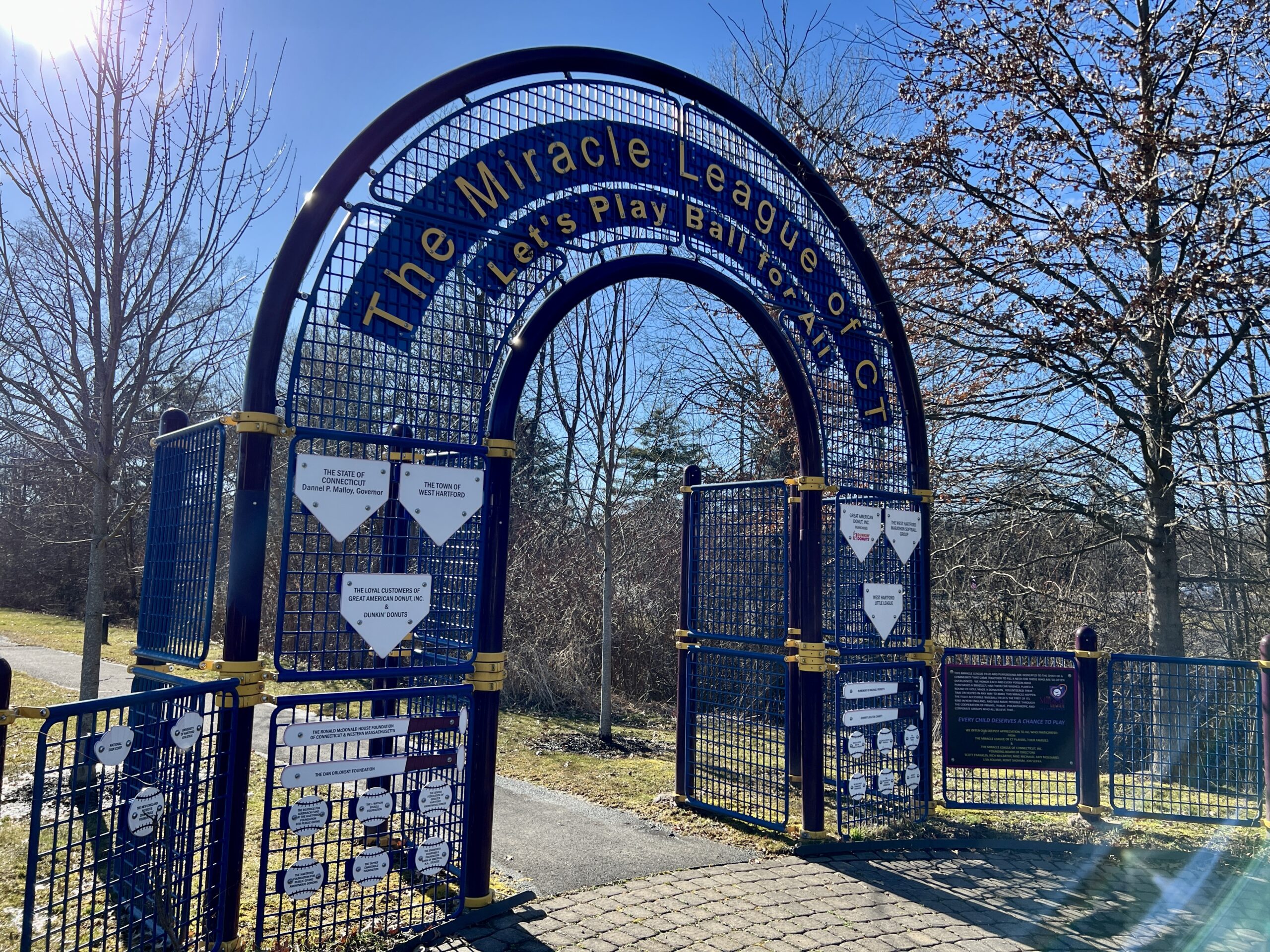

re: Jeff Murrey’s Col. of 12/29/23. I enjoy these articles. I remember the little structure where the circle is in the photo of Farmington Ave an the Main Streets. It raised the police officer up above the traffic and kept him out of the weather. I’ve lived in the same house for 83 years. It was formerly owned by the first policeman in W.H. He had 13 children and had a nursery business on the side.